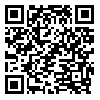Volume 68, Issue 3 (5 2010)
Tehran Univ Med J 2010, 68(3): 188-193 |
Back to browse issues page
Download citation:
BibTeX | RIS | EndNote | Medlars | ProCite | Reference Manager | RefWorks
Send citation to:



BibTeX | RIS | EndNote | Medlars | ProCite | Reference Manager | RefWorks
Send citation to:
R B, SZ H, M A, AS F. Pulmonary Hydatid cyst: analysis of 1024 cases. Tehran Univ Med J 2010; 68 (3) :188-193
URL: http://tumj.tums.ac.ir/article-1-364-en.html
URL: http://tumj.tums.ac.ir/article-1-364-en.html
1- , Bagherir@mums.ac.ir
Abstract: (11291 Views)
Background: Pulmonary hydatic cyst is a common parasitic disease and health care problem in developing countries. In our study we assessed treatment outcomes of pulmonary hydatic cyst in our area.
Methods: All patients presenting to Ghaem, Omid and Mehr hospitals of Mashhad- Iran since 1981 to 2008 with pulmonary hydatic cyst were enrolled in this study and demographic data, location and number of cysts, diagnostic methods, type of operations, out comes and rate of recurrence were statistically analyzed.
Results: One thousand and twenty for patients enrolled in this study. The mean age was 30.6±16.1 years and male to female ratio was 1.2. The most common symptoms were cough (55.1%) and chest pain (33.8%). 53.8% of the patients had right side involvement, 40% had left side involvement and 6.2% had bilateral disease. Inferior lobe was the most common involved lobe. The cyst was intact in 52.6% and the other cases were complicated or perforated. The most common surgical technique was removing the cyst membrane without resection of pericyst and closure of air leaks (67.2%). The cyst was enucleated in 21.2% and parenchymal resection was performed in 10.3%. The mortality rate was 0.2% and morbidity occurred in 8.4% of patients. The most common complications were dead-space in pulmonary parenchyma in 3.4% of cases and wound infection in 1.5%.
Conclusion: The best treatment for pulmonary hydatic cyst disease is surgery with low mortality and morbidity. The most common treatment is extraction of cyst membrane and closure of small air ways. Pulmonary resection should be reserved for complicated forms of disease.
Send email to the article author
| Rights and permissions | |
 |
This work is licensed under a Creative Commons Attribution-NonCommercial 4.0 International License. |





